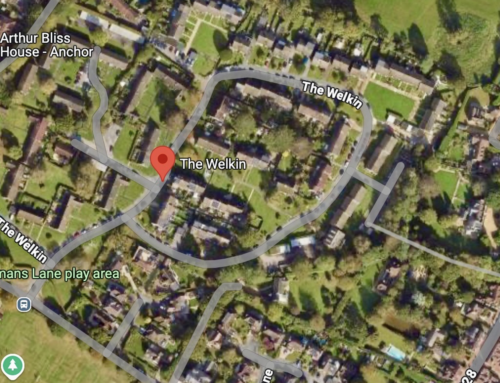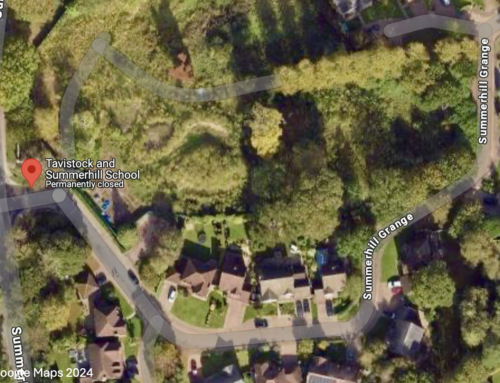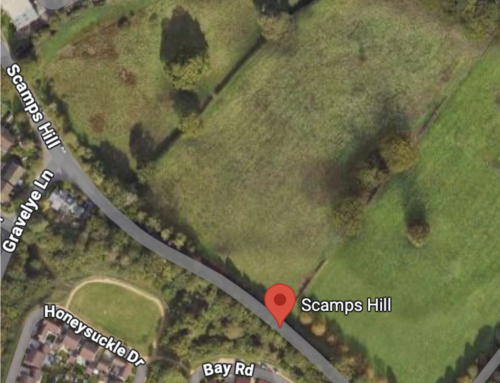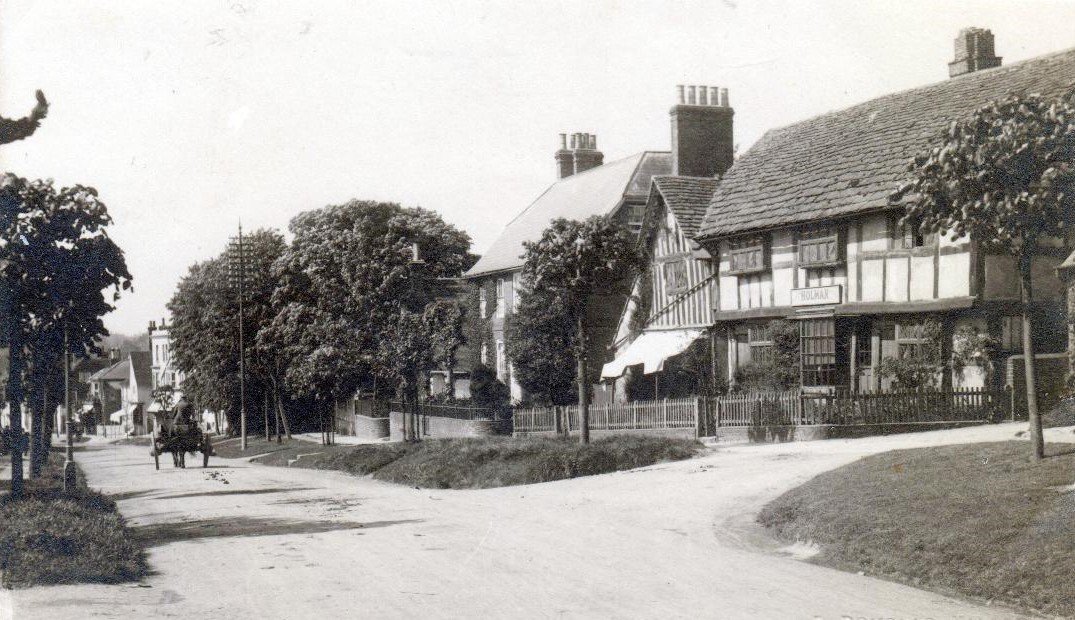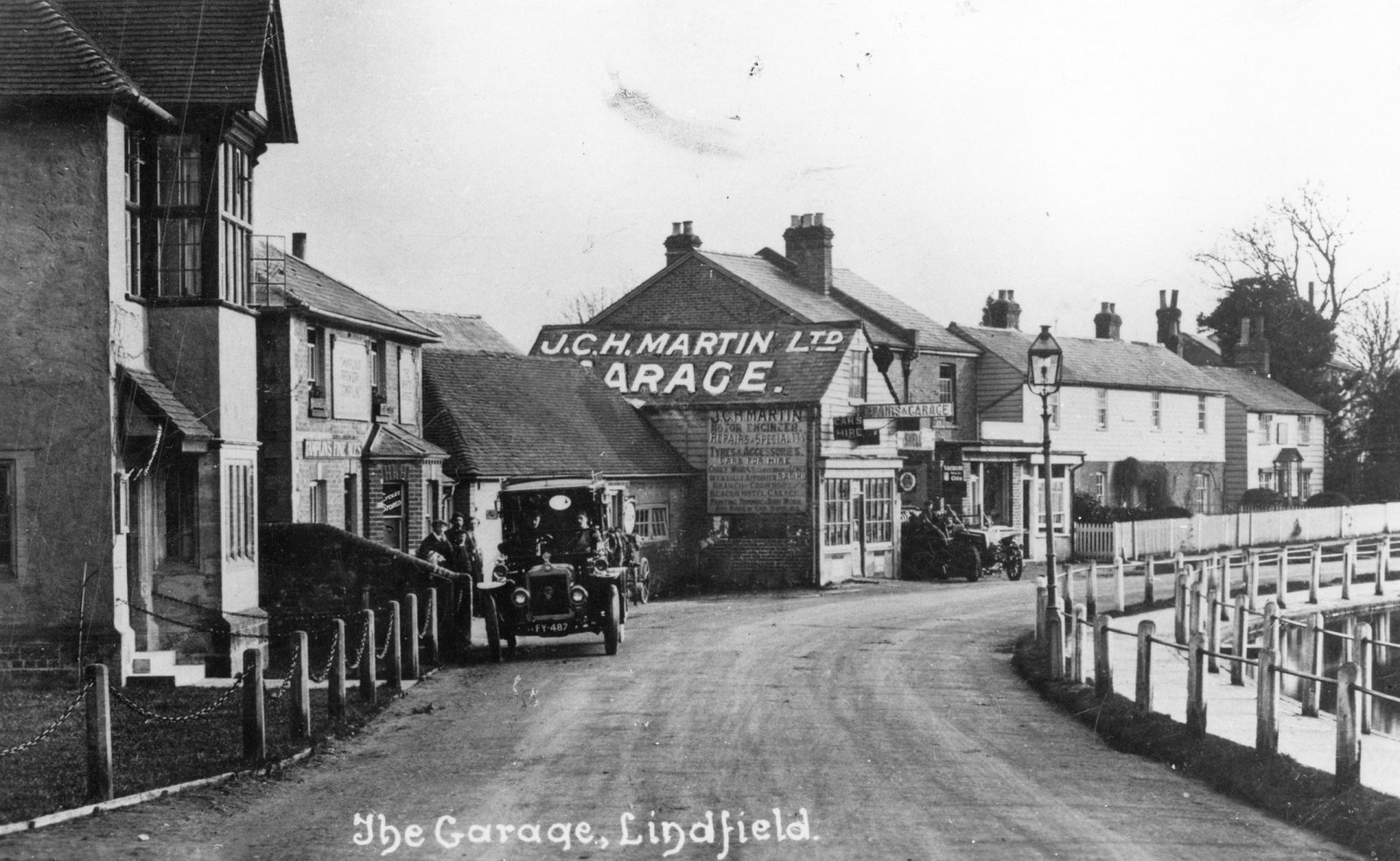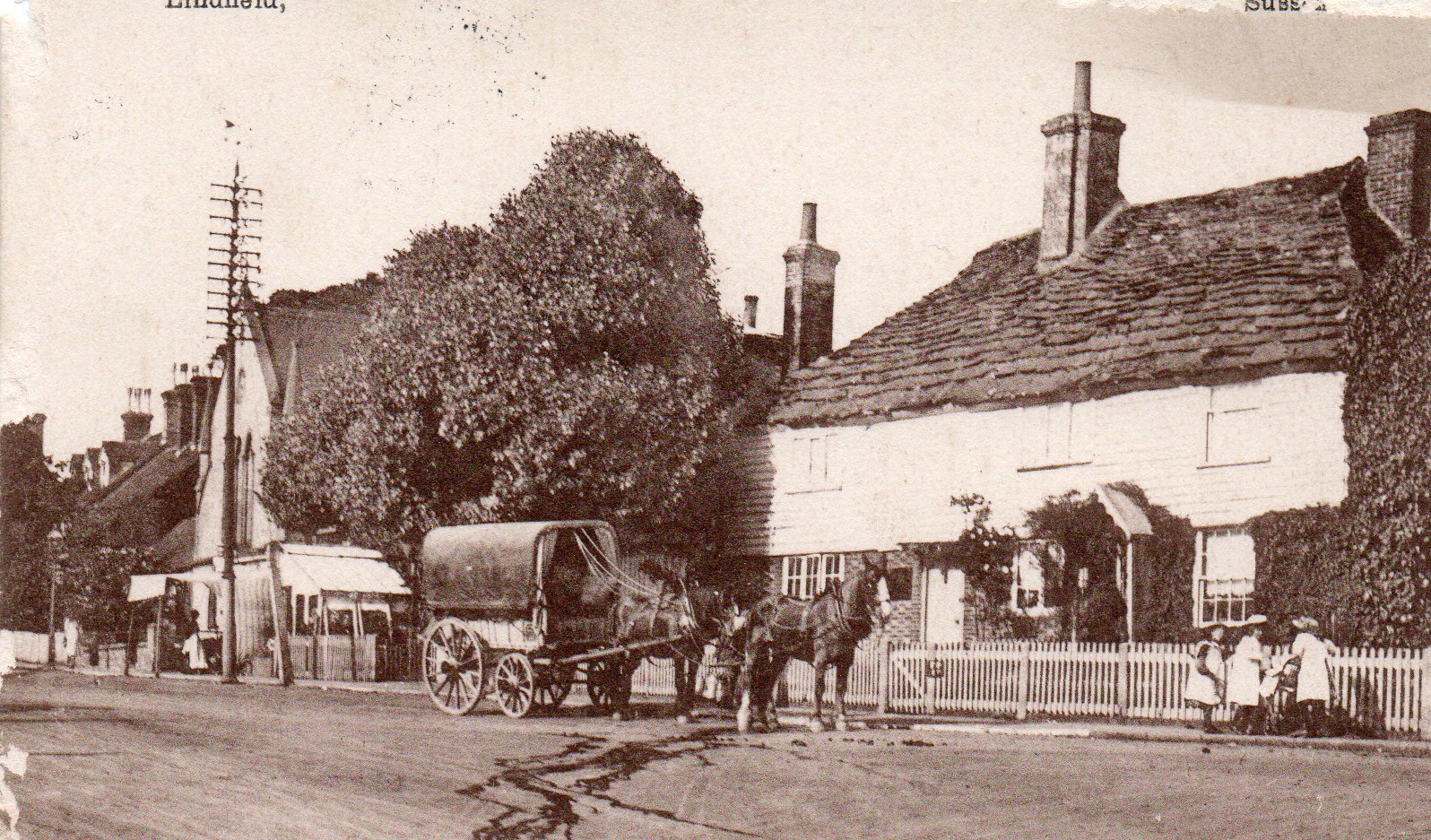by chiefwomble
Share

Presentation to the Planning Inspector hearing the appeal in relation to Mid Sussex DC planning appeal ref AP/24/0044. Planning Inspectorate ref: APP/D3830/W/24/3350075 – Land off Scamps Hill, Lindfield – John Dawson on behalf of The Lindfield Society
Thank you for giving me the opportunity to speak at this Inquiry.
My name is John Dawson, I am a member of the management committee of the Lindfield Society. Our Society is committed to the preservation, sympathetic development and improvement of public amenity in and around our village. Its members, some 500 or so and indeed the wider village community, are anxious that their voice should be heard at this inquiry given that the District Council has withdrawn its opposition to the development without further discussion or consultation. We believe that there is a strong case to be made to reject this appeal and we are keen that you should listen to what we have to say before making any decision.
The Lindfield Society originally sought to become a rule 6 party in this appeal. It withdrew that application having been satisfied that the Council had determined to oppose Gladman’s appeal and that it had strong grounds to do so.
Lindfield is a category 2 settlement in terms of the District Plan, meaning that it is one of the District’s larger villages. But, not withstanding that categorisation, it is still a village, one of Sussex’s most characteristically special villages with a large designated conservation area and many conservation worthy assets. That said we recognise that the village must grow to meet changing needs and modern demands in order to remain a successful, vibrant, integrated community.
But that growth needs to be managed in a way that respects and conserve Lindfield’s special character and rural location. Development sites should be chosen carefully in consultation with the local community with regard to the type of development needed by our community. Such development should not overwhelm the already overburdened infrastructure and service facilities, and should avoid the village becoming just a dormitory town for Haywards Heath or a dumping ground on inappropriate sites for the overspill needs of other parts of the District that could be met in more sustainable locations elsewhere.
Lindfield, which had a recorded population of 8272 in 2021 has already seen very considerable and extensive development in recent years resulting in our infrastructure being stretched to breaking point. Local schools are full, the road network cannot cope and we have a medical centre that now has a patient list of 11,000 but cannot recruit additional doctors simply because their building is too small.
Lewes Road, which Scamps Hill is an extension of, has been the subject of various 106 agreements in the past and has a particularly difficult junction with Lindfield High Street. That junction has been declared as ‘over capacity’ as long ago as 2008 and Lewes Road should at the very least have a 7.5 tonne weight restriction but despite both the District Council and County Council having very large reserves of infrastructure funding, nothing has been done to improve the situation. With recent planning permissions we will have 750 additional dwellings using the Lewes Road and despite 4 Section 106 agreements specifying that improvements to the Lewes Road/Lindfield High Street junction should be implemented, nothing has been done. The relative remoteness of the Scamps Hill site challenges the assumption that this is a sustainable and safe location for housing development. Therefore this would inevitably be a car dependent development, contrary to national policy, making a difficult situation even worse.
The Lindfield Society recognises that the December 2024 changes to the NPPF have had a significant impact on the number of houses to be built over the next five years and we are not in a position to challenge Mid Sussex’s position that, following those changes, it can no longer demonstrate a five year housing land supply; so we have to accept that at best it currently only has a 3.38 years worth of supply. Because of this, and the fact that the current District Plan is more than 5 years old, we also recognise that our case for saying that this appeal should be rejected hinges on the question of whether the adverse implications of Gladman’s scheme significantly and demonstrably outweigh its benefits when assessed against the policies in NPPF taken as a whole ie the NPPF tilted balance test.
We do not think that the Council, having conceded, only very recently, that the tiled balance applies by reason of its housing land supply shortfall, gave appropriate attention to the adverse impact factors in terms of either the District Plan itself, or the NPPF, and had they done so, that should have led the Council to maintain its objection to Gladman’s appeal.
Last year the Government launched a review of the National Planning Policy Framework with the aim to reform the planning system. In July came a ministerial statement from the Deputy Prime Minister and Secretary of State for Housing, Communities and Local Government. The Minister said, and I quote ‘These reforms to planning policy make it more important that every local authority has a development plan in place. The plan making system is the right way to plan for growth and environmental enhancement, ensuring local leaders and their communities come together to agree on the future of their areas. Once in place, and kept up to date, local plans provide the stability and certainty that local people and developers want to see our planning system deliver. But too many areas do not have up to date local plans – just a third of plans have been reviewed and updated in the past five years. In the absence of a plan, development will come forward on a piecemeal basis, with much less public engagement and fewer guarantees that it is the best outcome for communities. That is why the Government’s goal is for universal coverage of ambitious local plans as quickly as possible.
The Minister continued – ‘In pursuit of that goal, we therefore propose to take a pragmatic approach to the interaction between the changes we have set out today, and the fact that local authorities across England will have local plans at various stages of development. In practice, this means that:
– for plans at examination, allowing them to continue, although where there is a significant gap between the plan and the new local housing need figure, we will expect authorities to begin a plan immediately in the new system;
– for plans at an advanced stage of preparation (Regulation 19), allowing them to continue to examination unless there is a significant gap between the plan and the new local housing need figure, in which case we propose to ask authorities to rework their plans to take account of the higher figure; and
– areas at an earlier stage of plan development should prepare plans against the revised version of the National Planning Policy Framework and progress as quickly as possible’.
Mid Sussex District Council have a District Plan that is currently undergoing the planning examination process with the Planning Inspectorate. That process should be allowed to continue against the backdrop of the new housing need figure.To uphold this appeal is to completely ignore both this Ministerial Statement and the new NPPF. There are numerous planning appeals and court decisions involving out of date local plans and local planning authorities with an insufficient housing land supply in which the developer’s appeal was nonetheless refused: cases where, on their facts, the application of the tilted balance was found to be insufficient to justify the proposed development because the proposal’s adverse impacts would significantly and demonstrably outweigh the benefits, when assessed against the policies in the NPPF taken as a whole.
There is a very pertinent Court of Appeal case with which your appellants will be all too familiar, namely Gladman Developments Limited v Secretary of State for Housing, Communities and Local Government and Corby Borough Council and Uttlesford District Council Ref: [2021] EWCA Civ 104. In this case Gladman unsuccessfully appealed to the courts against two separate planning appeal decisions. In both cases the Planning Inspectors upheld decisions by two separate Local Planning Authorities to refuse planning permission for unconnected Gladman development schemes, notwithstanding the application of the tilted balance in both cases.
The Court of Appeal rejected Gladman’s argument that, where the presumption in favour of sustainable development and tilted planning balance apply, decision-makers must assess proposals only against relevant policies in the NPPF and that policies within an out of date local plan have no relevance. The Court of Appeal ruled that even where development plan policies are rendered out of date by housing land shortfalls, those policies remain relevant to the application of the tilted balance, and decision-makers should not disregard policies of the development plan when applying the tilted balance unless they are incompatible with the NPPF read as a whole.
Indeed, as the whole structure of the planning system is based on plan-led decision making. The statutory responsibility of decision makers involves their determining applications in accordance with the local plan unless material considerations indicate otherwise (Planning and Compulsory Planning Act 2004 s.38(6). Local plan policies that are material to the planning decision should be taken into account except to the extent that they are in conflict with the NPPF. The incompatibility of a proposed development scheme with a plan policy will be an adverse impact to be considered by the planning authority in the exercise of its planning judgement, giving that impact the degree of weight that (a) reflects its degree of compatibility with the NPPF taken as a whole and (b) its significance in terms of the Local Plan.
This Court of Appeal decision has been followed by planning inspectors in numerous planning appeal cases in addition to those of Corby and Uttlesford including, recently, more local ones in Wealden and Horsham, two other Sussex authorities without a 5 year housing land supply.
I will refer to those decisions in which the tilted balance again came down against the developer, in more detail in a moment.
In the case of the 2018 Mid Sussex District Plan, as updated by the Sites Allocation DPD 2022, it is fundamental to the spatial planning policies that new development should only take place within existing community boundaries, or on allocated sites outside those boundaries which have been assessed as sustainable locations for new development, or in countryside locations in very limited circumstances set out in policies DP12, DP15 and DP16. Gladman’s current application does not fall into any of these limited Plan policy exceptions to the Plan’s overall objective of directing new development primarily into existing town and village communities and protecting the countryside from new unallocated greenfield development.
These policy provisions are entirely consistent with the NPPF, which strongly encourages plan makers to develop clear overall strategic policies as to where new development should be focussed, and where and how the countryside and natural environment are to be conserved and enhanced (NPPF para 20 and chapter 15), which is what MSDC’s District Plan does. There is no reason in principle therefore why full weight should not be given to these District Plan policies and Gladman’s application treated as having a significant adverse impact on the fulfilment of the Plan’s strategic development location objectives.
Yes, the proposed development will provide an additional 90 houses to meet the District’s newly determined shortfall and temporary building jobs. But how big a benefit is that? Those 90 houses do not meet an identified shortfall need within Lindfield. 60 of those new houses will be executive market homes which will do nothing to address the principal problem at both national and local level, namely a serious shortfall in the building of affordable and social housing, principally to meet a need for social rent.
There is no submitted evidence that there is a shortage of people looking to fill available local job vacancies; so we question whether there is any substance to Gladman’s claim that the extra housing will provide new job opportunities or address an identified need for new workers in the area, given that Mid Sussex is a locality of unusually high levels of employment.
So, whilst we do not challenge that the building of new homes would provide some benefit in helping to meet the overall District’s housing needs, please consider just how significant a benefit that is in reality given its incompatibility with The District Plan’s overall spatial strategy DP6, coupled with its policies DP12 and DP15 that address the protection of the countryside and the limitation on new housing there.
It’s worth remembering that the Council previously considered and rejected this site as a sustainable and suitable site for allocation within its new draft District Plan. Currently in mid- examination before one of your colleagues; and why it was rejected.
In terms of the site appraisal process it was reviewed as Site 983, described as: Land at Walstead Grange, Scamps Hill, Lindfield, with an anticipated yield of 90 dwellings. The Council’s recorded conclusion was “Great weight is given to the conservation and enhancement of the historic environment. Development of the site would cause less than sustainable harm: High impact to a grade I listed building. It is not considered that the benefits of development would outweigh harm or loss to the asset. The site is therefore considered unsuitable for development and has been excluded from further assessment.”
Of course, the NPPF requires great weight to be given to harm to heritage assets, whatever the degree of that harm. This is supported by District Plan policy DP34 which says that “Proposals affecting such heritage assets will be considered in accordance with the policies in the National Planning Policy Framework (NPPF) and current Government guidance.”
Nothing on the ground has changed to justify any alteration to that conclusion; just the application of the tilted balance. But even in that tilted balancing exercise, great weight must still be given to that harm.
The heritage advice given to the Council by its Conservation Officer, Emily Wade, adds further support to the need to give due weight to the harm to the site’s surrounding heritage assets. Her report concludes with her advice that Gladman’s proposal would ‘result in a high level of harm to an asset (Walstead Grange) of a high level of significance within the local context by virtue of the development’s proximity, intervisibility, impact on the character of the approach to the asset, loss of the current separation from Lindfield village and loss of the agricultural character of the farmstead’s historical farmlands’.
In terms of the harm that the development would cause to the rural character and appearance of the area. Lindfield is still a rural village built on high ground overlooking the Ouse river valley. It lies on the borders of the High Weald National Landscape and within Ashdown Forest’s 7km zone of influence. Its separation from Haywards Heath to the south west and Scaynes Hill to the south is constantly under challenge, and we are very sensitive to the danger of the village losing its distinctiveness by becoming absorbed into a suburb of Haywards Heath. That makes it all the more important that we protect the rural areas elsewhere that serve to maintain the separation and characteristics that make Lindfield unique and special: an archetypal Sussex village in a rural setting.
Scamps Hill Road, the B2111, has long served as a boundary against further northwards encroachment into the fields and countryside beyond the settlement boundary that have always preserved Lindfield’s rural character. Gladman’s scheme would breach that boundary, and the protective purposes of the Council’s District Plan policies DP12 and DP15 dealing with the protection and enhancement of the countryside and with development there. The Council acknowledges that development at Scamps Hill would breach those policies, the primary objective of which, to quote from DP12, is ‘to secure the countryside’s protection by minimising the amount of land taken for development and preventing development that does not need to be there’
This proposed development does not need to be there. The village’s Neighbourhood Plan identifies locations for growth elsewhere within the village that suffice to meet Lindfield’s identified and evidenced needs. The District Plan and recent Sites Allocation DPD do not propose any new development before 2031 in or around this rural part of the District.
In our view, the Council has, in this instance, given insufficient weight to the value and importance of giving effect to its own Plan policy, whose purpose is to protect and enhance the character of our local countryside, avoid large scale and inappropriate development there, and to do so in the context of its great value in helping to define the appearance and characteristic qualities of Lindfield.
Can the adverse impacts of a development in terms of its effect on a rural community significantly and demonstrably outweigh its benefits? Yes it can, and has done so in very similar circumstances to ours. I draw your attention to the similarities of this case with that of a situation in Ninfield in Wealden district. Wealden had a 3.8 year housing land supply, but nonetheless rejected an application to build 72 energy-efficient homes (26 affordable) on a greenfield site which, like Scamps Hill, lay outside the village boundary (on the basis that its adverse impact would significantly and demonstrably outweigh its benefits. The developer lost an appeal against the Council’s determination. The Planning Inspector concluded as follows:
’36. The Council cannot demonstrate either a 4 or 5 year supply of deliverable housing sites, and the main parties agree that, for the purposes of this appeal, the Council can demonstrate a 3.83 year supply. Therefore paragraph 11(d) of the Framework is engaged which requires that planning permission be granted unless the adverse impacts of doing so would significantly and demonstrably outweigh the benefits of the development, when assessed against the policies within the Framework taken as a whole. Therefore, the policies that are the most important for the determination of the application are deemed to be out of date. However, this does not mean they do not apply and overall, the proposal conflicts with the development plan as a whole.
’37. There is an under delivery of housing and affordable housing in Wealden. The proposed development would provide up to 72 new homes which would be accessible or adaptable and, 35% of which would be affordable housing. This would contribute to the government’s target to significantly boost the supply of homes and to address the needs of groups with specific housing requirements. The proposed development would also bring the associated economic benefits of up to 72 dwellings, such as construction expenditure and jobs and spend in the local area from future occupants. It is also put to me that the development would be energy efficient and I have considered the benefits set out above of biodiversity, open space provision and self build housing. Due to the scale of the appeal scheme the proposed development would result in a moderate contribution towards these matters. Nevertheless, together these are important considerations and I afford significant weight to them’.
’38. However the proposed development would be outside the settlement boundary and, moreover, would result in substantial and permanent harm to the character and appearance of the area. The proposed development would therefore not create a high quality, beautiful and sustainable place which is fundamental to what the planning process should achieve. Therefore, overall, the proposed development would result in substantial harm’.
’39. Consequently, the harm I have identified would have a serious harmful effect on the character and appearance of the area, which would lead me to conclude that these substantial adverse effects attract greater weight that significantly and demonstrably outweighs the benefits set out above. Therefore, the presumption in favour of sustainable development would not apply in this case’.
Conclusion
’40. The proposal would not accord with the development plan and there are no other considerations to indicate that the appeal should be determined otherwise. Therefore, for the reasons given above, I conclude that this appeal should be dismissed.’
(The Planning Inspectorate case reference is APP/C1435/W/23/3331659).
Note that this decision was arrived at on the basis of the harmful impact on the character and appearance of the area alone, whereas in this case that factor, whilst important in itself, is only one of a series of harmful impacts that have to be weighed in the balance.
I would also like to draw your attention to another local appeal case, this time in Pulborough in Horsham District – another district with an out of date plan and a housing supply shortfall, where the Planning Inspector agreed with the Council’s refusal of a planning application on the ground that the proposed development would not be in a suitable location having regard to the spatial strategy for the District, and that, overall, it would be contrary to the out of date Horsham development plan. The Planning Inspectorate reference is APP/Z3825/W/21/3281657.
All of which goes to prove that adverse impacts on the countryside and its character and significance to the community affected can and have sufficed to justify rejecting an inappropriate development scheme even where the tilted balance is in play. This should be another of those cases.
Cumulatively, there are patently really significant harmful impacts from an inappropriate development in entirely the wrong place that outweigh any benefit offered by the extra housing on offer. The development would significantly breach a number of relevant core District Plan policies, policies that are fully compatible with the NPPF. This would not be a sustainable development. The Council was right to turn it down initially, and wrong not to give sufficient thought or weight to the significance of its downsides before reversing their position after conceding that they lacked a 5 year housing land supply.
In our opinion the tilted balance falls clearly on the side of rejecting this appeal.
Thank you again for giving me the opportunity to speak on behalf of the Lindfield community.
_____________________________________________________



